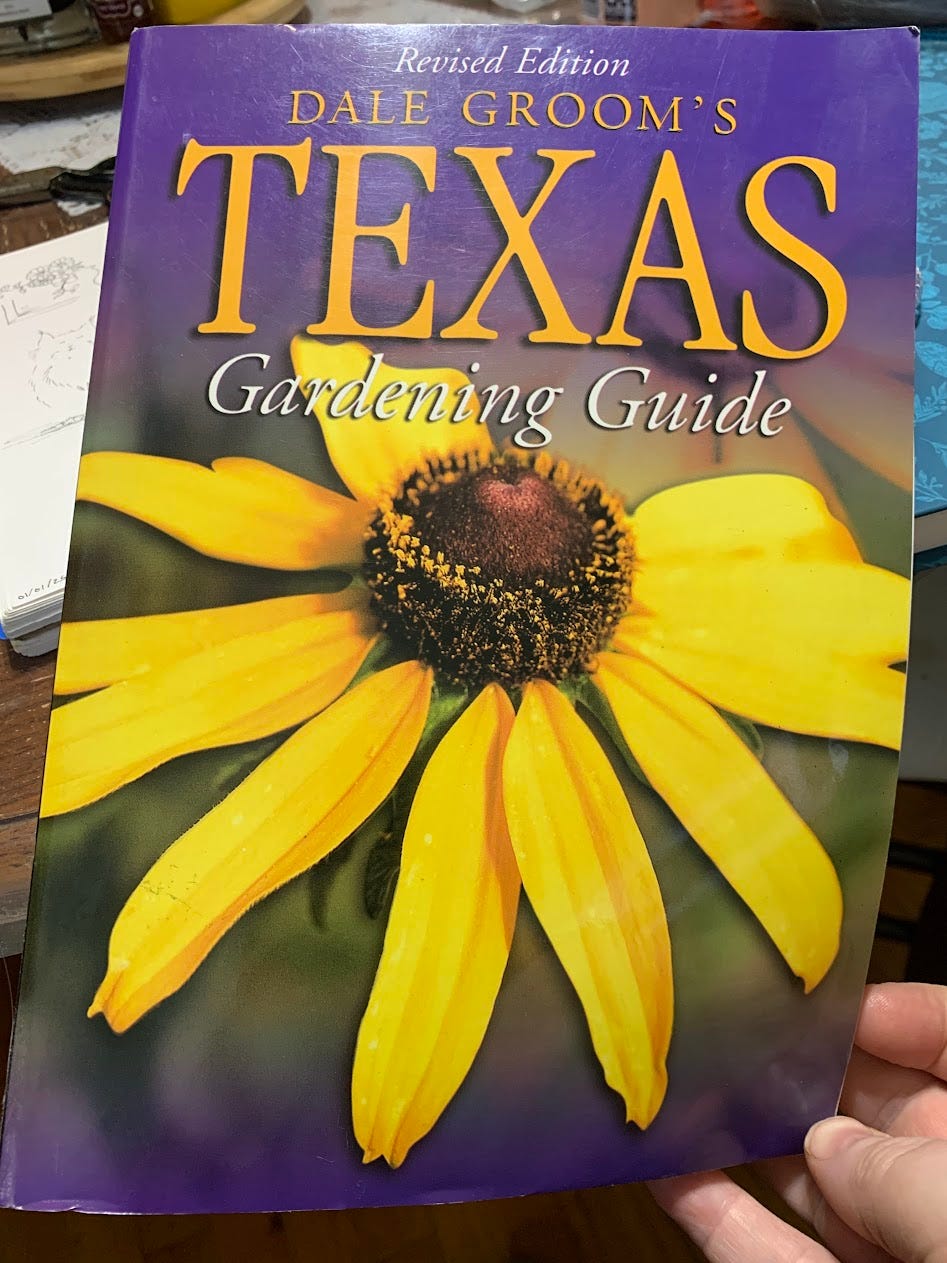I’ve picked up a few books on gardening in Texas, and my mother gifted me with some when we bought the house. I thought as I’m re-reading them, and reading new acquisitions, I’d do a couple of book reviews.
If you don’t live in Texas, this will have limited use for you. If you do live in Texas, this may have limited use for you. Let me explain something I’ve learned in reading Texas garden books.
Texas is really large. I think most of you know that, but what you might not have thought about is that Texas has several growing zones from top to bottom (6 to 11), from side to side it goes from wet (East) to almost unimaginably dry (West to the Chihuahua Desert). There simply is no reasonable way to write and publish a prescriptive gardening book for the whole of Texas. What I have found about these books, then, is they focus on the main urban areas of the state: Houston, Austin, or Dallas-Fort Worth (DFW). Which is practical, given that’s where most of the people are, but this is why I say it’s of limited use to the home gardener and landscaper. You have to determine which of those three areas the book is centered on (researching where the author lives is helpful here) and pick the one closest to your area. All three of those cities are in different growing zones and biomes! I’m closest to DFW. Plants which may thrive in hot, wet Houston will cock up their toes and expire noisily and rapidly in my garden. Plants which thrive in DFW may struggle along unhappily in my garden, but it’s closer at least.
With this explanation, I still enjoyed Dale Groom’s Texas Gardening Guide, in part because of a focus on something I have not got. Not any longer, anyway. As Dale talks about different plants, there are notes and comments for which ones are child-friendly. I love this emphasis on making gardens a family project, and for this reason, I’d recommend the book. There are many clever ideas for how to garden with children, to engage them in enjoying it, and plants which are good for certain projects.
The beginning of the book goes over the basics of establishing a garden, or landscape (this book is mostly what I would call landscaping, for decorative purposes solely). The rest of it is full plant profiles, and while individually these are well laid-out with plenty of information on planting, care while growing, suggestions, and design ideas… there are also several invasive species included. This book isn’t old enough for them to have been unknown, and even if this wasn’t really my cup of tea for other reasons, I would give it a serious down check for those. There are numerous exemplars of species brought to the country by garden clubs avidly seeking new and interesting specimens for their gardens, which then ran rampant. My old foe the Amur Honeysuckle, for one. The Heavenly Bamboo (Nandina domestica), for another which is recommended in this book. If you are new to gardening, before you buy and plant something, look at more than one source, and in particular look to see if it’s invasive.
Overall? I can’t say this is a book you should buy. I liked the emphasis on children. The personal notes about the author’s grandmother’s garden tried-and-true plants where she never watered them are great. It is well laid-out and the format is great for a reference book which is actually going to be faster to find information than sifting through the results of an internet search. However, it seems to be focused on the southern part of the state, which isn’t useful for me. And he does include several invasive, but common, landscape plants. I’d say that if you pick up a copy secondhand and inexpensive, go right ahead. I wouldn’t suggest you seek it out.






I live in south Texas, a couple hours southwest of Houston. Our garden planting is late before Dallas is frost-free. The biggest thing driving our garden seasons is a sub-tropical sun. We basically plant a spring (February to May) and fall (late October to February) garden. Mid-June to October is spent suppressing the waves of weeds that can survive our summers here.
I have one of my mother's gardening guides. In a list of good ground covers that fill in rapidly, its lists kudzu.